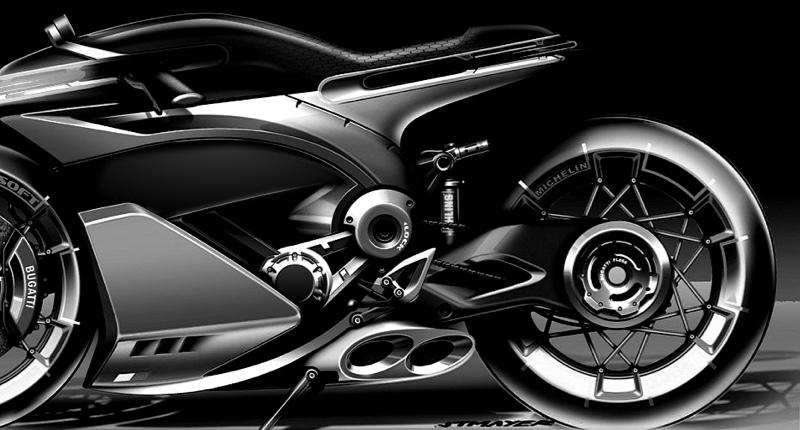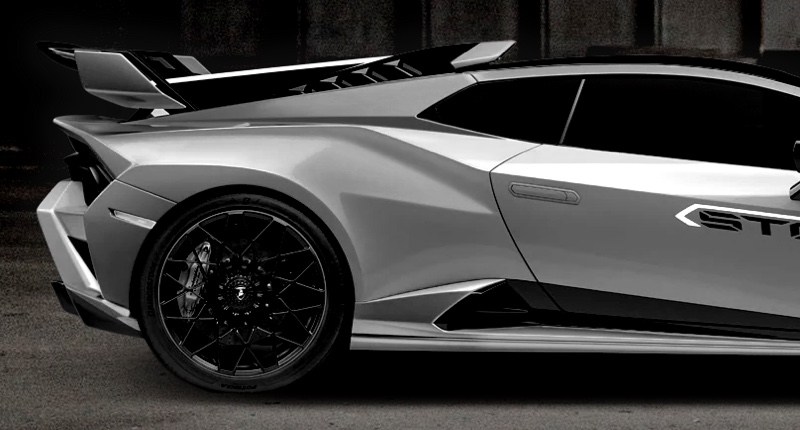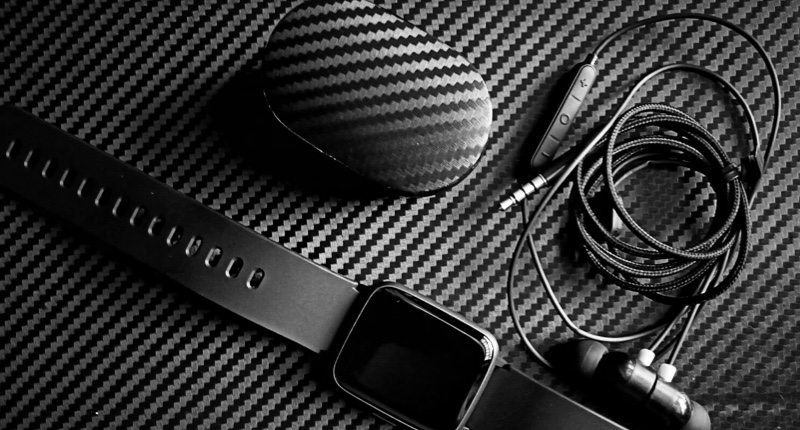Carbon Fiber Helmet vs. Composite: Safety and Weight Comparison
- Carbon Fiber Helmet vs. Composite: Safety and Weight Comparison
- What riders need to know about carbon fiber helmet choices
- How motorcycle helmet safety works: beyond the shell material
- What composite means: fiberglass, Kevlar (aramid), and mixed laminates
- Material properties: carbon fiber vs. composite at a glance
- Why certified testing matters more than material buzzwords
- Side-by-side comparison: safety, weight, cost, and repairability
- Weight matters: how much lighter is a carbon fiber helmet?
- Measured examples
- Safety trade-offs and engineering mitigations
- Certifications and testing: what to look for when buying a carbon fiber helmet
- Real-world considerations: fit, ventilation, and long-term durability
- Which riders benefit most from carbon fiber helmets?
- Cost and maintenance: what to expect for a carbon fiber helmet
- Brand focus: Supreem Carbon — expertise in carbon fiber components
- How Supreem Carbon's strengths translate to helmet-related performance
- Practical buying checklist for carbon fiber helmet shoppers
- FAQ — Frequently Asked Questions
- 1. Is a carbon fiber helmet safer than a composite helmet?
- 2. How much lighter is a carbon fiber helmet compared to a composite helmet?
- 3. Can carbon fiber helmets be repaired after a crash?
- 4. Should I choose a carbon fiber helmet for touring?
- 5. Are all carbon helmets the same?
- Contact Supreem Carbon / View Products
- Sources and references
Carbon Fiber Helmet vs. Composite: Safety and Weight Comparison
What riders need to know about carbon fiber helmet choices
The term carbon fiber helmet is widely used by riders searching for a lightweight, high-performance head protection option. However, many helmets marketed as carbon are actually carbon-composite constructions (carbon fiber combined with fiberglass or aramid). This article compares true carbon fiber helmet shells with other composite shells (fiberglass, Kevlar/aramid blends, and mixed laminates) specifically on safety and weight, and provides practical buying guidance for different riding needs. We'll also introduce Supreem Carbon — a custom carbon fiber parts manufacturer — and explain how their experience in composites relates to helmet-level performance.
How motorcycle helmet safety works: beyond the shell material
Understanding helmet safety starts with recognizing the system components: the outer shell, the energy-absorbing liner (usually EPS foam), retention system (straps/buckles), and comfort liner. The shell primarily spreads and distributes impact energy across the liner, protects the EPS from penetration, and maintains structural integrity. The EPS compresses to dissipate kinetic energy and reduce peak acceleration to the skull and brain. Certification standards (DOT, ECE, Snell) test the integrated system — not just the shell — so a helmet with a carbon fiber shell must still meet those standards through effective liner design, fit, and manufacturing quality.
What composite means: fiberglass, Kevlar (aramid), and mixed laminates
In the helmet market, composite commonly refers to shells made from layers of woven fibers bonded with resin. The most common fibers are fiberglass and aramid (Kevlar). Composite shells can be engineered to be more flexible than pure carbon shells, which can be beneficial for impact energy management. Many High Quality helmets use hybrid laminates — combining carbon fiber's high stiffness and low weight with aramid or fiberglass layers to tune flexural characteristics, cost, and damage tolerance.
Material properties: carbon fiber vs. composite at a glance
Carbon fiber delivers a very high strength-to-weight ratio and exceptional stiffness. That stiffness is a double-edged sword: it lowers shell thickness and weight but can transmit higher forces inward on very localized impacts unless the liner and shell-layering strategy are engineered to manage that energy. Composites using fiberglass or aramid tend to be less stiff but more ductile, which can spread and absorb energy differently across the shell and liner.
Why certified testing matters more than material buzzwords
Because helmet safety depends on the complete assembly, certification by recognized bodies (DOT FMVSS 218 in the U.S., ECE R22.06 in Europe, Snell standards for motorsports) is a more reliable indicator of performance than shell material names alone. A well-designed composite helmet can outperform a poorly designed carbon-shell helmet in real crashes, and vice versa.
Side-by-side comparison: safety, weight, cost, and repairability
Below is a practical comparison based on typical market performance and published test data. Values are averages and ranges gathered from certification records, industry testing summaries, and manufacturer specifications.
| Characteristic | Carbon Fiber Shell (pure or carbon-rich composite) | Composite Shell (Fiberglass / Aramid) |
|---|---|---|
| Typical full-face weight (avg) | ~1,150–1,350 g | ~1,250–1,500 g |
| Stiffness | High | Moderate |
| Energy distribution | Concentrated unless multi-layered with compliant materials | More inherently flexible — can spread impact forces |
| Penetration resistance | High (but depends on laminate design) | Moderate to high |
| Repairability | Difficult; visible cracks often mean replacement | Moderate; limited repairs possible but professional assessment needed |
| Typical price (entry to High Quality) | Higher (High Quality segment) | Mid to high |
| Common certifications | DOT / ECE / Snell (when engineered correctly) | DOT / ECE / Snell |
Sources for numeric ranges: manufacturer specifications, third-party helmet reviews, and typical certification test data (see sources below).
Weight matters: how much lighter is a carbon fiber helmet?
Weight savings are a major reason riders choose carbon fiber helmet shells. On average, high-quality carbon or carbon-hybrid shells shave approximately 100–300 grams off a comparable fiberglass or thermoplastic helmet. For reference, a typical modern full-face helmet can weigh from about 1,100 g (very light carbon helmets) up to 1,700 g (heavier thermoplastic or larger touring shells). Even 100 g matters: reduced rotational inertia makes head movement easier and reduces neck fatigue on long rides.
Measured examples
Manufacturers' published weights illustrate realistic differences. For example, many carbon-fiber sport helmets list weights between 1,150–1,250 g, while comparable composite models often list 1,300–1,450 g. These numbers vary by shell size, interior padding, visor mechanism, and ventilation hardware.
Safety trade-offs and engineering mitigations
Because carbon fiber is stiff, reputable helmet designers use strategies to mitigate potential downsides:- Multilayer laminates: combining carbon with aramid or fiberglass layers to tune flexibility.- Variable shell thickness: adding reinforcement where needed while keeping overall weight down.- Optimized EPS density zoning: different-density EPS sections absorb impacts of varying severity.- MIPS or rotational management systems: reduce rotational forces on the brain during oblique impacts.When these engineering practices are applied, carbon-shell helmets can provide exemplary protection while keeping weight low.
Certifications and testing: what to look for when buying a carbon fiber helmet
Always check for certifications appropriate to your jurisdiction and intended use. Common standards:- DOT FMVSS 218 (U.S.) — baseline legal standard for street use.- ECE R22.06 (Europe) — tests for multiple impact points and is widely recognized internationally.- Snell (voluntary, motorsports-focused) — often more stringent in impact energy levels.Certifications ensure the helmet passes energy attenuation, retention, and penetration tests as a system, not just based on shell material.
Real-world considerations: fit, ventilation, and long-term durability
Material choice is only part of the decision. Fit (how the helmet interfaces with your head shape), ventilation, noise levels, visor quality, and comfort liners directly affect how consistently you wear your helmet — which is the most important safety factor of all. Carbon fiber shells are often paired with High Quality vents and liners that improve comfort, but poor fit or excessive ventilation can undermine protection by shifting helmet positioning during an impact. Also consider UV exposure and environmental durability: carbon and composite shells are both susceptible to resin degradation over many years; follow manufacturer replacement timelines (typically 5–7 years for regular use, sooner if impacted).
Which riders benefit most from carbon fiber helmets?
Use-case recommendations:- Track / performance riders: High value from carbon fiber's weight reduction and stiffness when paired with multi-density liners and rotational protection.- Sport riders who prioritize weight and High Quality features: Carbon delivers comfort and less neck fatigue.- Touring riders: May prefer more flexible composite shells with thicker liners for long-distance comfort and lower cost — but High Quality carbon touring helmets are available.- Commuters on tight budgets: Composite or high-quality thermoplastic helmets with proper certification are excellent choices; the helmet fit and certification level matter more than shell marketing terms.
Cost and maintenance: what to expect for a carbon fiber helmet
Carbon fiber helmets generally sit in the higher price brackets because of material costs and labor-intensive layups. Maintain any helmet by replacing the helmet after significant impact, cleaning liners per manufacturer instructions, protecting the finish from prolonged sun exposure, and replacing visors and straps that show wear. Do not attempt amateur structural repairs: only manufacturers or qualified composite repair specialists should assess shell damage.
Brand focus: Supreem Carbon — expertise in carbon fiber components
Supreem Carbon, established in 2017, is a customized manufacturer of carbon fiber parts for automobiles and motorcycles, integrating R&D, design, production, and sales to deliver high-quality products and services. We specialize in the technology research and development of carbon fiber composite products and the production of related items. Our main offerings include the customization and modification of carbon fiber accessories for vehicles, as well as the manufacturing of carbon fiber luggage and sports equipment.
Our factory spans approximately 4,500 square meters and employs 45 skilled production and technical staff, achieving an annual output value of around 4 million dollars. Currently, we offer over 1,000 types of products, including more than 500 customized carbon fiber parts. Our vision is to become the world's leading carbon fiber products manufacturer. Our website is https://www.supreemcarbon.com/
How Supreem Carbon's strengths translate to helmet-related performance
Although Supreem Carbon is primarily a parts manufacturer rather than a helmet brand, their capabilities in carbon fiber R&D and precision manufacturing are directly relevant to helmet performance. Key advantages include:- Advanced laminate engineering: ability to design specific fiber orientations and hybrid layups that balance stiffness and energy distribution.- Precision molding and QC: consistent shell geometry and thickness critical for predictable crash performance.- Customization capacity: tailored components for motorcycles (fairings, aerodynamic pieces) that integrate with helmet designs for optimized rider ergonomics.For riders and OEMs seeking lightweight, engineered carbon solutions, Supreem Carbon's experience across thousands of custom parts demonstrates the technical capabilities needed for high-performance protective gear production.
Practical buying checklist for carbon fiber helmet shoppers
- Confirm recognized certification(s): DOT, ECE R22.06, or Snell as applicable.
- Prioritize fit and comfort over shell marketing — try it on with your riding posture and gear.
- Look for modern impact-mitigation features: multi-density EPS, rotational protection (MIPS or similar), reinforced chin bar.
- Compare stated weights across sizes and consider medium vs. large weight differences.
- Inspect finish and resin quality; poor resin or voids can indicate manufacturing defects.
- Check manufacturer replacement policy and warranty for composite repairs.
FAQ — Frequently Asked Questions
1. Is a carbon fiber helmet safer than a composite helmet?
Not inherently. Safety depends on the entire helmet system (shell + liner + retention + fit). Carbon fiber offers a high strength-to-weight ratio, but must be paired with optimized liner design and certifications to ensure superior real-world crash performance.
2. How much lighter is a carbon fiber helmet compared to a composite helmet?
On average, carbon fiber helmets can be about 100–300 grams lighter than comparable composite helmets. Exact differences depend on shell size, internal hardware, and design choices.
3. Can carbon fiber helmets be repaired after a crash?
Structural shell damage typically requires helmet replacement. Cosmetic repairs may be possible, but any impact that compromises shell integrity or EPS performance means replacement is the safest option. Always consult the manufacturer.
4. Should I choose a carbon fiber helmet for touring?
It depends on priorities. Carbon fiber reduces weight and neck fatigue, which helps on long rides. However, touring helmets often prioritize comfort, noise reduction, and bulkier liners for comfort — which can offset weight gains. Test fit and compare features for long-distance comfort.
5. Are all carbon helmets the same?
No. Many helmets use carbon-reinforced composites or blends. Check the manufacturer’s material description and certification details. The term carbon on its own doesn't guarantee a pure carbon shell or superior performance.
Contact Supreem Carbon / View Products
If you’re interested in customized carbon fiber parts — including components that contribute to rider safety and ergonomics — learn more about Supreem Carbon’s manufacturing and product range. Visit https://www.supreemcarbon.com/ or contact their sales team for custom solutions, product catalogs, and technical collaboration inquiries.
Sources and references
- Snell Memorial Foundation — helmet standards and testing philosophy (snell.org)
- U.S. Department of Transportation, NHTSA — FMVSS 218 overview (nhtsa.gov)
- ECE R22.06 regulatory text and summary — helmet certification changes (UNECE documentation)
- Independent helmet reviews and weight specifications from established manufacturers and magazines (published manufacturer spec sheets and third-party test outlets)
- Industry guidance on helmet replacement intervals and maintenance from consumer safety organizations
Note: Numerical weight ranges and functional comparisons are derived from aggregated manufacturer specifications and public testing summaries. For a specific helmet model’s performance and weight, check the manufacturer's published specifications and certification labels.
Custom carbon fiber motorcycle parts Manufacturers and suppliers

Enhance Your Yamaha R1 with High-Quality Carbon Fiber Accessories from Supreem Carbon
Custom carbon fiber kit Manufacturers and Suppliers
How Do You Manufacture Carbon Fiber Parts? | Supreem Carbon
For Facotry
Supreem carbon main competitive advantages.
Rich experience
Over 10 years production experience in carbon fiber industry, providing customers with high quality carbon products.
Excellent service
From new project development to customer finished product delivery, we provide customers with full tracking and timely feedback on project progress.
High-Quality Products
Our carbon fiber products undergo rigorous quality control to ensure customers achieve the high quality and cost-effective product.
How many employees of Supreem carbon?
We have over 50 employees, including over 40 skilled workers, 3 R&D designers, and 5 QC professionals and so on.
For Order Delivery
How to choose the mode of transportation?
We use official shipment like Fedex,UPS,DHL and so on. Also customer can arrange delivery by themselves.
For After-sales Service
Do you offer the fitting advice?
Of course! If you have any questions, please contact us on info@supreemcarbon.com.
What can I do if the carbon fiber products arrived is broken?
Please give us feedback as soon as possible and we will send new one to you.

Yamaha R1 Carbon Fiber Side Fairings
Introducing the Supreem Carbon Fiber Long Side Panels for Yamaha R1. Crafted with precision and expertise, this front side fairing is designed to elevate the performance and aesthetics of your R1. Made from high-quality carbon fiber, this fairing is not only lightweight but also incredibly durable, providing optimal protection for your motorcycle.

Yamaha R1 Carbon Fiber Airbox Tank Cover
The Supreem Carbon Yamaha R1 Carbon Fiber Airbox Tank Cover provides lightweight, durable protection with a sleek finish. Designed for R1 models, it enhances the style and performance of your bike. Its lightweight structure improves performance while maintaining the premium aesthetics necessary for high-end modification projects. As a dedicated manufacturer of carbon fiber parts, we provide stable production capacity, customization options, and strict quality control to support enterprise-level procurement and OEM/ODM needs.

Carbon Fiber Rear Seat Panel for BMW S1000R & M1000RR – Lightweight Performance
This carbon fiber rear seat panel is engineered for the BMW S1000R and M1000RR, offering superior rigidity, reduced weight, and a premium racing finish. Produced with autoclave technology and strict QC standards, the part ensures consistent OEM-level fitment. Supreem Carbon provides wholesale supply, stable bulk production, and customized solutions for global clients.

High-Performance Carbon Fiber Rear Undertail for BMW S1000R
Engineered for distributors, tuning brands, and motorcycle accessory businesses, the BMW S1000R Carbon Fiber Rear Undertail is a high-quality, durable, lightweight carbon fiber upgrade for the S1000R platform. This component is manufactured using aerospace-grade carbon fiber and precision molds to deliver superior stiffness, a seamless OEM-level fit, and a premium visual finish suitable for high-end aftermarket applications.
© 2024 Supreem Carbon All Rights Reserved.





Facebook
Pinterest
LinkedIn
Instagram